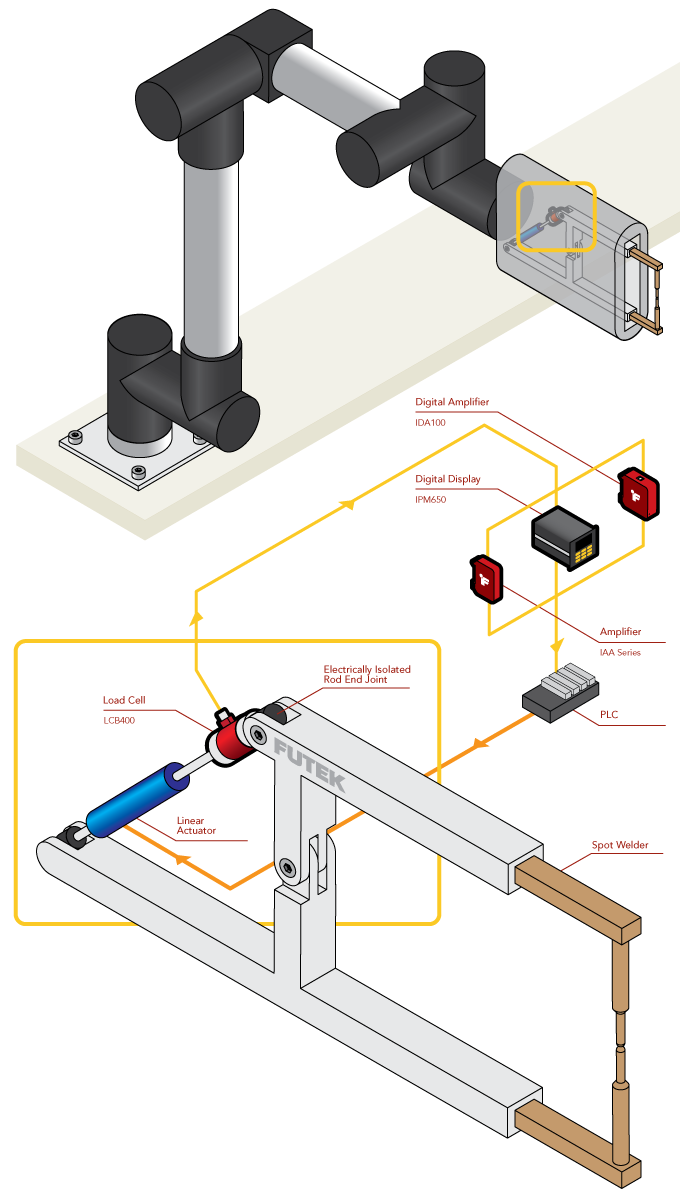 |
|
Application 173
Robotic Spot Welding Force
Application Summary
Robotic spot welders can vastly speed up the manufacturing process by automating welding of complex or hard to access assemblies. The robot must apply the same force to clamp the parts being welded to make a strong, complete weld. To ensure this, an LCB400 Rod End Load Cell is used in line with the tong's actuator to measure clamping force during welding.
Products in Use
One LCB400 Rod End Load Cell paired with Instrumentation (IAA Series or IDA100). |
 |
|
How it Works
|


















